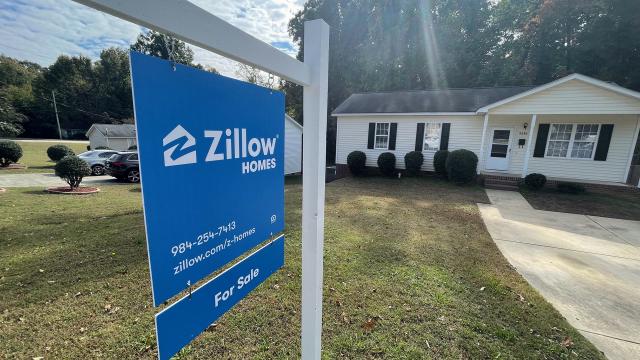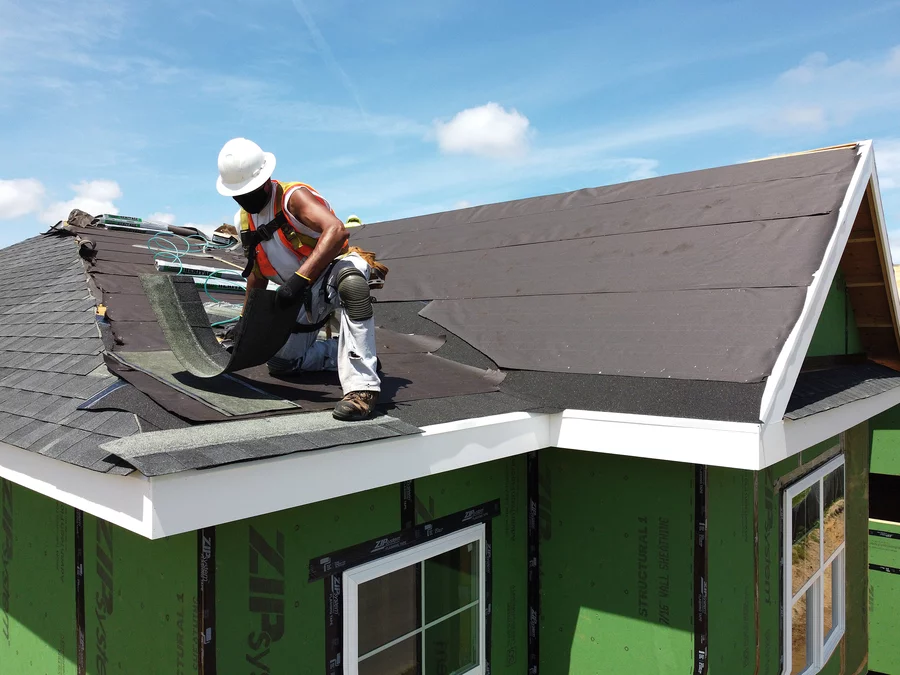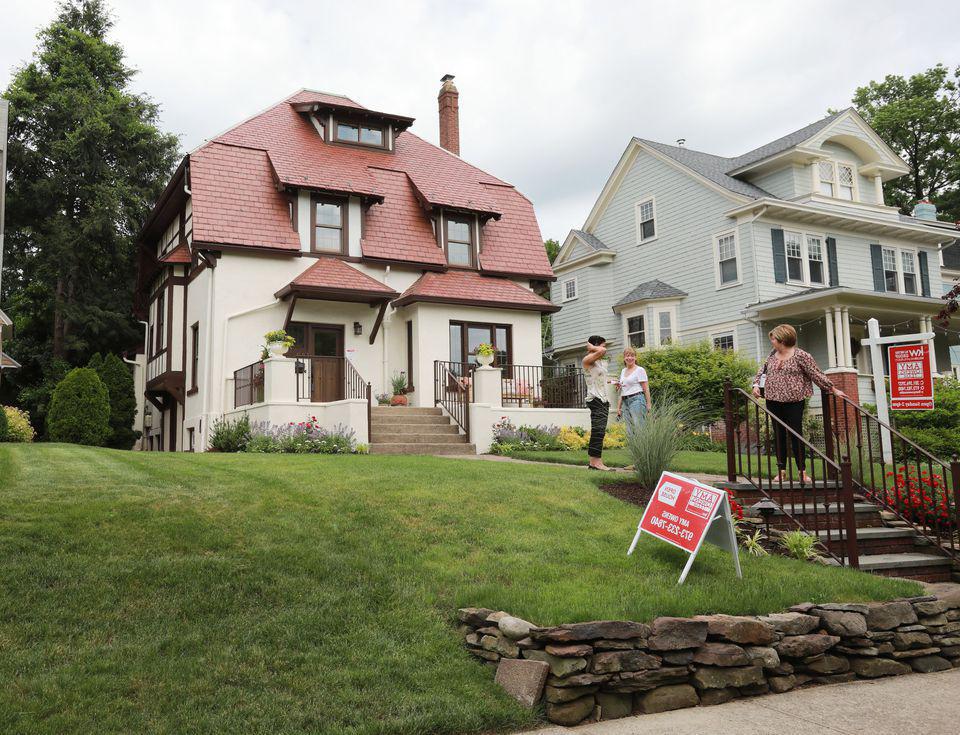
人力荒 新州允退休教师回锅担任「要职」领两份薪水
世界新闻网
01/24/2022

为解决疫情期间教师不足的问题,新泽西州议会日前通过新法案,允许退休教师或学教职员回锅担任「重要职位」,并同时领取其退休金;民主党籍州长墨菲(Phil Murphy)已签署该案,预料将能有效缓解校园人力荒。
提案的三名民主党籍众议员艾萨克斯郡(Essex)米拉.杰西(Mila Jasey)、肯登郡(Camden)帕梅拉.蓝皮特(Pamela Lampitt)及哈德逊郡(Hudson)穆克吉(Raj Mukherji)发表联合声明表示:「我们必须确保校园内有足够且教学经验丰富的老师,在教师短缺的现在,允许退休教职员回锅才能贯彻『学童优先』的教育本旨;本法允许回锅教师领两份薪水,应有助于缓解各级学校人力不足的问题。」
根据新法,不强制有意回锅任教的退休教职员回到其退休的学校任教,得自由选择到哪教书,不过必须是退休180天以上者方可回校;回聘契约一年一订,校方得视情形依教师意愿于第二年延展,但除非经教育委员会核准,否则不得续教第三年;另外教师须为善意退休,即不得基于领取两份薪水的意图,事先与校方安排好回聘契约。
不过新法并未定义何谓「重要职位」,而是授权教育委员会以行政命令发布;立法理由指出,虽然教师人力不足是州内各校普遍状况,但各校缺乏的师资或职员不一定是同一种类别,有的学校或许比较缺物理老师,有的学校可能缺双语教师,因此授权行政机关依个案认定。
Jan 4, 2022
New Jersey lawmakers want to call on retired teachers to re-enter the profession to help with COVID-19 disruptions in schools. An Assembly panel unanimously advanced a measure this week that would allow retired teachers and some professional educational staff to temporarily return to work without impacting the status of their pensions.
另一方面,州政府表示新法案虽然对想赚多点钱的退休老师们有一定吸引力,但因为现在校园内有相对严格的防疫措施,不仅要求打疫苗、戴口罩,还要求教师须有接到停课令后立刻改为在线教学的资讯能力,而资讯能力正是退休教职员可能相对不足的面向,因此究竟新法案能把多少退休老师带回学校仍有待观察。
新州39岁华妇偕两幼儿 已失踪3天 警发布协寻
世界新闻网
01/24/2022

新泽西州摩利斯郡(Morris County)检察官办公室失踪人口小组24日发布消息,39岁的华裔女子萧程(Cheng C. Hsiao,以下均音译)与两个儿子22日失踪,丈夫担心妻小人身安危,报警盼众人协寻。
新州摩利斯郡检察官卡洛(Robert J. Carroll)指出,萧氏母子三人22日早上6时30分到下午4时之间,离开位于蒙特维尔市(Montville)吐瓦科区(Towaco)旧巷(Old Lane)95号的家后,丈夫23日「担心他们的安危」而报警。
39岁的萧程身高5呎2吋(约157公分),体重121磅(约55公斤),有着乌溜黑发和棕色眼睛;3岁的儿子萧伊森(Ethan Hsiao)和2岁的萧伊恩(Ian Hsiao)也是黑发棕眼。
若有关于萧氏母子的资讯,请拨973-257-4300通知摩利斯警方,或通过摩利斯郡通信中心973-285-2900联系检察官办公室失踪人口小组值班员警。
匿名通报者可致电1-800-743-7433摩利斯郡阻止犯罪热线(Morris County Crimestoppers)。


BREAKING: Search Underway for Missing NJ Mother, Two Children
By rlsmetro
01/24/2022

Morris County
Morris County authorities seek the public’s assistance in locating a 39-year-old female from Montville Township and her two young children.
Officials said the three were reported missing on January 23, 2022, and there is a concern for their well-being.
According to police, Ms. Cheng Hsiao, and her two children, Ethan, three and Ian, 2, live in the Towaco section of Montville Township.
They were last known to be at their family home at 95 Old Lane on Saturday, January 22, 2022.
Police say they believe the trio left their residence between 6:30 a.m. and 4:00 p.m. on January 22, 2022.
Cheng C. Hsiao is a 39-year-old female.
She has black hair and brown eyes. She weighs approximately 121 lbs. and is 5 feet 2 inches tall.
Ethan Hsiao is a 3-year-old male. He has black hair and brown eyes. Ian Hsiao is a 2-year-old male.
He has black hair and brown eyes.
Anyone with information regarding their whereabouts or this investigation is encouraged to make contact with Montville Township Police Department Detective Bureau at 973-257-4300 or the Morris County Prosecutor’s Office Missing Persons Unit On-Call Detective through the Morris County Communications Center at 973-285- 2900.
Callers seeking to remain anonymous can contact Morris County Crimestoppers at 1-800-743-7433.
4种身分读大学 可享新州居民学费
世界新闻网
01/07/2022

新泽西州议会已通过一项法案,对于人口贩卖受害者以及持有几种特定签证的移民,可享有州民身分的学费(in-state tuition)收取标准就读州内大学;这项编号为S3119的新法将于州长墨菲(Phil Murphy)签署后生效。
新法上路实施后,符合资格的移民学生以及现居美国的外籍人士,在新泽西州就读大学将可省下不少学费。
以罗格斯大学(Rutgers University)为例,新布朗士维克(New Brunswick)校园大学部学生州民学费一学年为1万5804元,外州学费(out-of-state)每学年学费则为3万3005元。食宿费用每学年平均约为1万3402元。
根据法案,州民学费收取标准将适用于:
持有T签证(T visa)的学生
现居美国的人口贩卖受害者,经国土安全部认定若遣返回到祖国将面临危险。新法上路后也将为T签证持有人就读大学提供州政府补助、奖助金及奖学金。
持有U签证(U visa)的学生
现居美国且曾经协助执法机关调查犯罪案件,或者在犯罪案件中遭受身体或精神伤害的受害者。U签证持有人同样也可获得新州政府提供奖学金或助学金。
持有O-1签证外籍人士的儿女
美国对科学、艺术、教育、商务、体育、电视界及电影圈等方面的杰出人士提供O-1签证,O-1签证持有人的儿女或监护儿童将适用新州州民学费标准,但无法获得新州政府奖学金或奖助金补助。
持有O-2签证外籍人士的儿女
O-2签证是发给现居美国,为O-1签证持有人的特定工作或演出担任助理的外籍劳工。O-2签证持有人的儿女或监护儿童也适用新州州民学费标准,不过没有州府的奖助学金补助。
全美100贵邮区 新泽西州3区上榜 加州占最多
世界新闻网
11/25/2021

房地产数据统计网站Property Shark最近公布一项调查结果,针对今年房屋成交价中位数进行分析比较后,得出全国百大最贵的邮递区号,其中新泽西州共三区上榜。
该调查限于今年1月1日至10月22日内完成房屋交易的对象;而列入调查的邮递区号必须在这段期间内至少有三笔房屋交易,包括合作公寓(co-ops)、共有公寓(condo)、独立屋(single)以及可容纳两户家庭的独立住宅(two-family homes)。
调查的最后共有127个邮递区号入选,入选最多的为加州莫属,占比高达七成;而新州在今年调查中也占了三个邮递区号,突破往年的纪录,不过该州最贵的邮递区号并非名单上的稀客。
新州最贵的邮递区号落在博根郡(Bergen)的行政区阿尔派(Alpine),自2016年以来就一直是名单上的常胜军;该区房屋成交价中位数为200万元,全国排行第58名。
阿尔派在2018年曾以220万的成交价中位数挤进全国最贵邮递区号第33名,但去年排名却落到有史以来最低,成交价中位数仅145万,但并未掉出百大名单;2019年则是以178万5000元排第53名。
新州另外两个首次入选百大最贵邮递区号的分别为孟莫斯郡(Monmouth)的行政区史格(Sea Girt),以及五月岬郡(Cape May)的阿瓦隆(Avalon);第70名的史格成交中位数为189万2000元,阿瓦隆则是排名92,成交中位数是167万元。
Property Shark针对新州也额外增加七个行政区,凑齐该州10大最贵邮递区号,而其中两个地区:孟莫斯郡的迪尔(Deal)和艾萨克斯郡(Essex)的萧特山(Short Hills)也都曾入选全国百大最贵邮递区号。
新州十大最贵邮递区号依序排名:
1. 阿尔派
2. 史格
3. 阿瓦隆
4. 新弗农(New Vernon)
5. 萧特山
6. 迪尔
7. 石港(Stone Harbor)
8. 曼多洛津(Mantoloking)
9. 安歌坞市(Englewood Cliffs)
10. 朗姆森(Rumson)
Most Expensive U.S. Zip Codes in 2021: 10 Areas Surpass $4 Million Median Sale Price
the full list of 2021’s top 100 most expensive zip codes in the U.S.:
| # | Zip Code | Location | County | State | Median Sale Price 2021 |
|---|---|---|---|---|---|
| 1 | 94027 | Atherton | San Mateo County | CA | $7,475,000 |
| 2 | 02199 | Boston | Suffolk County | MA | $5,500,000 |
| 3 | 11962 | Sagaponack | Suffolk County | NY | $5,000,000 |
| 4 | 94957 | Ross | Marin County | CA | $4,583,000 |
| 5 | 33109 | Miami Beach | Miami-Dade County | FL | $4,475,000 |
| 6 | 90210 | Beverly Hills | Los Angeles County | CA | $4,125,000 |
| 7 | 93108 | Santa Barbara | Santa Barbara County | CA | $4,103,000 |
| 8 | 90402 | Santa Monica | Los Angeles County | CA | $4,058,000 |
| 9 | 94022 | Los Altos | Santa Clara County | CA | $4,052,000 |
| 10 | 98039 | Medina | King County | WA | $4,000,000 |
| 11 | 94024 | Los Altos | Santa Clara County | CA | $3,856,000 |
| 12 | 94301 | Palo Alto | Santa Clara County | CA | $3,800,000 |
| 13 | 11976 | Water Mill | Suffolk County | NY | $3,745,000 |
| 14 | 90742 | Huntington Beach | Orange County | CA | $3,625,000 |
| 15 | 92662 | Newport Beach | Orange County | CA | $3,577,000 |
| 16 | 94970 | Stinson Beach | Marin County | CA | $3,500,000 |
| 17 | 94028 | Portola Valley | San Mateo County | CA | $3,400,000 |
| 18 | 92067 | Rancho Santa Fe | San Diego County | CA | $3,399,000 |
| 19 | 92657 | Newport Beach | Orange County | CA | $3,365,000 |
| 20 | 92661 | Newport Beach | Orange County | CA | $3,293,000 |
| 21 | 90265 | Malibu | Los Angeles County | CA | $3,250,000 |
| 21 | 90272 | Los Angeles | Los Angeles County | CA | $3,250,000 |
| 22 | 10013 | New York | New York County | NY | $3,212,000 |
| 23 | 21056 | Gibson Island | Anne Arundel County | MD | $3,195,000 |
| 24 | 95070 | Saratoga | Santa Clara County | CA | $3,150,000 |
| 25 | 10007 | New York | New York County | NY | $3,125,000 |
| 26 | 94528 | Diablo | Contra Costa County | CA | $3,100,000 |
| 27 | 94010 | Hillsborough/Burlingame | San Mateo County | CA | $3,075,000 |
| 28 | 94920 | Belvedere Tiburon | Marin County | CA | $3,050,000 |
| 29 | 89413 | Glenbrook | Douglas County | NV | $3,000,000 |
| 30 | 95030 | Los Gatos | Santa Clara County | CA | $2,995,000 |
| 31 | 11932 | Bridgehampton | Suffolk County | NY | $2,963,000 |
| 32 | 90266 | Manhattan Beach | Los Angeles County | CA | $2,910,000 |
| 33 | 94306 | Palo Alto | Santa Clara County | CA | $2,810,000 |
| 34 | 93953 | Pebble Beach | Monterey County | CA | $2,750,000 |
| 34 | 11975 | Wainscott | Suffolk County | NY | $2,750,000 |
| 35 | 10282 | New York | New York County | NY | $2,725,000 |
| 36 | 92625 | Corona Del Mar | Orange County | CA | $2,695,000 |
| 37 | 11930 | Amagansett | Suffolk County | NY | $2,645,000 |
| 38 | 11959 | Quogue | Suffolk County | NY | $2,593,000 |
| 39 | 94025 | Menlo Park | San Mateo County | CA | $2,500,000 |
| 39 | 94062 | Redwood City | San Mateo County | CA | $2,500,000 |
| 39 | 89402 | Crystal Bay | Washoe County | NV | $2,500,000 |
| 40 | 91108 | San Marino | Los Angeles County | CA | $2,490,000 |
| 41 | 92651 | Laguna Beach | Orange County | CA | $2,475,000 |
| 42 | 90077 | Los Angeles | Los Angeles County | CA | $2,460,000 |
| 43 | 90212 | Beverly Hills | Los Angeles County | CA | $2,429,000 |
| 44 | 94507 | Alamo | Contra Costa County | CA | $2,400,000 |
| 45 | 95014 | Cupertino | Santa Clara County | CA | $2,310,000 |
| 46 | 94123 | San Francisco | San Francisco County | CA | $2,307,000 |
| 47 | 93921 | Carmel By The Sea | Monterey County | CA | $2,300,000 |
| 48 | 93067 | Summerland | Santa Barbara County | CA | $2,190,000 |
| 49 | 94087 | Sunnyvale | Santa Clara County | CA | $2,180,000 |
| 50 | 85253 | Paradise Valley | Maricopa County | AZ | $2,175,000 |
| 51 | 10001 | New York | New York County | NY | $2,171,000 |
| 52 | 90049 | Los Angeles | Los Angeles County | CA | $2,165,000 |
| 53 | 90274 | Rolling Hills | Los Angeles County | CA | $2,118,000 |
| 54 | 92660 | Newport Beach | Orange County | CA | $2,111,000 |
| 55 | 94040 | Mountain View | Santa Clara County | CA | $2,100,000 |
| 55 | 93920 | Big Sur | Monterey County | CA | $2,100,000 |
| 56 | 94070 | San Carlos | San Mateo County | CA | $2,055,000 |
| 57 | 06830 | Greenwich | Fairfield County | CT | $2,050,000 |
| 58 | 02554 | Nantucket | Nantucket County | MA | $2,000,000 |
| 58 | 94127 | San Francisco | San Francisco County | CA | $2,000,000 |
| 58 | 07620 | Alpine | Bergen County | NJ | $2,000,000 |
| 58 | 91008 | Bradbury | Los Angeles County | CA | $2,000,000 |
| 59 | 90048 | Los Angeles | Los Angeles County | CA | $1,985,000 |
| 59 | 94041 | Mountain View | Santa Clara County | CA | $1,985,000 |
| 59 | 91436 | Encino | Los Angeles County | CA | $1,985,000 |
| 60 | 90254 | Hermosa Beach | Los Angeles County | CA | $1,980,000 |
| 60 | 06878 | Riverside | Fairfield County | CT | $1,980,000 |
| 61 | 94402 | San Mateo | San Mateo County | CA | $1,968,000 |
| 62 | 11568 | Old Westbury | Nassau County | NY | $1,950,000 |
| 62 | 94002 | Belmont | San Mateo County | CA | $1,950,000 |
| 63 | 92118 | Coronado | San Diego County | CA | $1,940,000 |
| 64 | 10012 | New York | New York County | NY | $1,935,000 |
| 65 | 91302 | Calabasas | Los Angeles County | CA | $1,925,000 |
| 66 | 94705 | Berkeley | Alameda County | CA | $1,913,000 |
| 67 | 95032 | Los Gatos | Santa Clara County | CA | $1,911,000 |
| 68 | 90291 | Venice | Los Angeles County | CA | $1,907,000 |
| 69 | 95129 | San Jose | Santa Clara County | CA | $1,900,000 |
| 69 | 94563 | Orinda | Contra Costa County | CA | $1,900,000 |
| 69 | 91011 | La Canada Flintridge | Los Angeles County | CA | $1,900,000 |
| 69 | 90036 | Los Angeles | Los Angeles County | CA | $1,900,000 |
| 69 | 11963 | Sag Harbor | Suffolk County | NY | $1,900,000 |
| 70 | 08750 | Sea Girt | Monmouth County | NJ | $1,892,000 |
| 71 | 94118 | San Francisco | San Francisco County | CA | $1,868,000 |
| 72 | 10580 | Rye | Westchester County | NY | $1,861,000 |
| 73 | 94506 | Danville | Contra Costa County | CA | $1,860,000 |
| 73 | 94939 | Larkspur | Marin County | CA | $1,860,000 |
| 74 | 90211 | Beverly Hills | Los Angeles County | CA | $1,850,000 |
| 74 | 95120 | San Jose | Santa Clara County | CA | $1,850,000 |
| 74 | 02493 | Weston | Middlesex County | MA | $1,850,000 |
| 74 | 92014 | Del Mar | San Diego County | CA | $1,850,000 |
| 75 | 94904 | Greenbrae | Marin County | CA | $1,849,000 |
| 76 | 92663 | Newport Beach | Orange County | CA | $1,845,000 |
| 77 | 94030 | Millbrae | San Mateo County | CA | $1,840,000 |
| 78 | 94114 | San Francisco | San Francisco County | CA | $1,830,000 |
| 79 | 90232 | Culver City | Los Angeles County | CA | $1,819,000 |
| 80 | 06870 | Old Greenwich | Fairfield County | CT | $1,807,000 |
| # | Zip Code | Location | County | State | Median Sale Price 2021 |
|---|---|---|---|---|---|
| 81 | 93109 | Santa Barbara | Santa Barbara County | CA | $1,805,000 |
| 82 | 98040 | Mercer Island | King County | WA | $1,795,000 |
| 83 | 94549 | Lafayette | Contra Costa County | CA | $1,775,000 |
| 84 | 94061 | Redwood City | San Mateo County | CA | $1,773,000 |
| 85 | 94941 | Mill Valley | Marin County | CA | $1,758,000 |
| 86 | 02481 | Wellesley Hills | Norfolk County | MA | $1,756,000 |
| 87 | 94121 | San Francisco | San Francisco County | CA | $1,701,000 |
| 88 | 95130 | San Jose | Santa Clara County | CA | $1,700,000 |
| 88 | 10577 | Purchase | Westchester County | NY | $1,700,000 |
| 89 | 02468 | Waban | Middlesex County | MA | $1,695,000 |
| 90 | 93103 | Santa Barbara | Santa Barbara County | CA | $1,682,000 |
| 91 | 93923 | Carmel | Monterey County | CA | $1,665,000 |
| 91 | 02108 | Boston | Suffolk County | MA | $1,673,000 |
| 92 | 08202 | Avalon | Cape May County | NJ | $1,670,000 |
| 93 | 02535 | Chilmark | Dukes County | MA | $1,663,000 |
| 93 | 10069 | New York | New York County | NY | $1,663,000 |
| 94 | 06831 | Greenwich | Fairfield County | CT | $1,653,000 |
| 95 | 93110 | Santa Barbara | Santa Barbara County | CA | $1,650,000 |
| 95 | 94131 | San Francisco | San Francisco County | CA | $1,650,000 |
| 95 | 94574 | Saint Helena | Napa County | CA | $1,650,000 |
| 95 | 92861 | Villa Park | Orange County | CA | $1,650,000 |
| 95 | 94707 | Berkeley | Alameda County | CA | $1,650,000 |
| 96 | 11030 | Manhasset | Nassau County | NY | $1,647,000 |
| 97 | 94960 | San Anselmo | Marin County | CA | $1,645,000 |
| 98 | 90027 | Los Angeles | Los Angeles County | CA | $1,640,000 |
| 99 | 94303 | Palo Alto | Santa Clara County | CA | $1,633,000 |
| 100 | 94122 | San Francisco | San Francisco County | CA | $1,627,000 |
NJ Home Sales Cool, Prices Remain Hot for Fall
11/07/2021

High prices and low inventory have continued to cool sales throughout New Jersey. While New Jersey saw a slight decline in closed sales the past few months, overall sales are up 13.6% since the start of the year.
“For the past two years, the housing market has been an anomaly for a number of reasons,” said 2021 NJ Realtors President Jeff Jones. “The return to a more balanced market after almost a full two years of this competitive, in-demand atmosphere will be slower than potential buyers want and, likely, faster than those on the fence to sell will expect.”
Single family closed sales were down 17.5% in September 2021, to 7,756. Townhouse-condo closed sales were down 8.1% to 2,479, and adult community homes followed suit with a decrease of 14.4% to 729. Yet despite fewer sales, median sales price increased again across all categories in September. The single family median sales price increased 7.3% to $440,000; the townhouse-condo median sales price increased 5.1% to $310,000; and adult communities median sales price increased 26.4% to $303,330.
While listings are down year-over-year, the year-to-date new listings for all markets is down just 1.2% over the same period last year, which points to the market making up ground this fall, when new listings are typically lower.
The number of single family homes for sale remains low, but is still above the historical low of this past winter, which had the lowest number of homes for sale in over a decade, if not more. In September, there were 18,863 single family homes for sale throughout the state, representing a 26.1% decrease, which is typical of the decreases of the past three months.
Increasing inventory will be key to moderating prices, relaxing buyer competition, and opening the market back up. Many buyers have either been forced out due to affordability and not finding what they want leading them to wait. In a recent survey to 63,000 New Jersey Realtors, a majority of members see inventory as a very serious or serious problem, but with less intensity than when surveyed this past spring. Similarly, members surveyed said clients are not finding what they want within their price range, with just 41% reporting their clients are currently satisfied with the options in their price range.
If you know a potential first time homebuyer that is struggling to enter the market, have them visit newjersey.realestate/keys to register for a free virtual seminar to help potential first-time home buyers become homeowners. The seminar is this Thursday, Oct. 28 at 6:30 p.m. and all attendees will be entered to win a $250 gift card.
The $300m flip flop: how real-estate site Zillow’s side hustle went badly wrong
Zillow reportedly has about 7,000 homes that it now needs to unload – many for prices lower than it originally paid
11/05/2021

Online shopping can be dangerous, as the US property website Zillow has belatedly come to realize. While many of us wasted countless hours during the pandemic clicking through real estate listings on Zillow and daydreaming about the sort of pad we’d buy if we had deep pockets, the company was running a side-business, separate from its property searching website, in which it deployed algorithms to help it buy houses themselves and then flip them.
It did a lot of buying, but hasn’t been so great at the selling. This week the company announced that its home-buying division, Offers, had lost more than $300m over the last few months. Offers will now be shut down and about 2,000 people laid off. Zillow reportedly has about 7,000 homes that it now needs to unload; many for prices lower than it originally paid.
You would be forgiven for not knowing that Zillow was even in the business of buying houses. For most of its 15-year history the Seattle-based company focused on publishing online real estate listings. Then, in 2018, its CEO, Richard Barton, started to aggressively move the company into a business known as iBuying. The idea is that algorithms would identify attractive homes to flip; Zillow would buy the home directly from the seller; minor renovations would be made; Zillow would quickly flip the house and pocket a profit. At one point Barton aimed to buy 5,000 homes a month by 2024.
iBuying is a nascent industry. A recent report from Zillow found that the four largest iBuyers – Zillow Offers, RedfinNow, Offerpad and Opendoor – were responsible for just 1% of all US home purchases in the second quarter of 2021. (Although that number goes up to 5% in certain fast-growing markets like Phoenix.) But while it’s still in its infancy, there’s a lot of excitement among tech types about the future of algorithm-powered home buying. “There is an arms race right now of who will become the Amazon of real estate,” a real-estate professor at Columbia University recently told Marketwatch. “That’s why all these companies like Zillow or Redfin want to have everything in house.”
Enormous companies with deep pockets and mounds of data bidding against ordinary people in an already absurd housing market? It sounds like a nightmare for anyone who isn’t a tech investor. And indeed, news of what Zillow has been up to has caused a backlash on social media, largely fuelled by a viral TikTok by a Nevada real-estate agent called Sean Gotcher that claimed iBuyers manipulate the housing market.
Gotcher didn’t explicitly name Zillow but he heavily alluded to them and accused the company of using data harvested from people perusing their dream homes while they are bored on the website. Gotcher said this nameless company then buys a ton of properties in the neighbourhood people are searching for, and overpay for a couple of adjacent properties in order to artificially drive up prices. (Zillow and Redfin have denied doing this and real estate experts have noted they don’t have enough market share for this strategy to work.)
Zillow may not have been explicitly manipulating the market, but it was certainly trying to use technology to outsmart it. In the end, however, the market won. Zillow’s flipping flop should serve as a reassuring reminder that not everything can be automated. There are various reasons why Zillow got burned, including a labour shortage making it difficult to renovate homes. But the biggest issue is that its algorithm simply wasn’t up to snuff. It couldn’t deal with the complexities of pricing in a volatile market and resulted in Zillow overpaying for a lot of property.
While individual homebuyers may not have to compete against Zillow any longer, it’s unlikely that buying a house is going to get any cheaper or easier anytime soon. Those 7,000 houses Zillow is sitting on? Bloomberg reports that they will probably be offloaded to institutional investors like BlackRock rather than regular people. And while Zillow may be ending its iBuying business, the financialization of housing looks set to continue. Big money is gobbling up real estate and leaving many first-time buyers out in the cold.
Zillow helped drive up Triangle real estate prices, but its decision to exit could lead to deals
By Matt Talhelm | WRAL
11/03/2021

RALEIGH, N.C. — Zillow is trying to sell hundreds of homes it owns across the Triangle as the company gets out of the instant home buying, or iBuying, business.
The online real estate marketplace cited “unpredictability” in forecasting prices for its decision to halt iBuying.
WRAL News searched online property records and found Zillow listed as the owner of 211 homes in Wake County, 62 in Durham County, 41 in Johnston County and 10 in Orange County.
Zillow has been buying and selling homes in the Triangle for three years, and some in the real estate industry say the company has helped drive up home prices by routinely flipping homes days after buying them – sometimes for tens of thousands of dollars over what it paid.
“There has been a number of homes, probably the vast majority of them, that have been a bit overpriced,” Raleigh realtor Steve Gunter said.
Jeff Simerson sold his three-bedroom, three-bathroom home south of Garner to Zillow a month ago for $563,000, and the site now lists the property for $578,900.
“Everybody kind of looked at me funny when I said I sold my house to Zillow. They were like, ‘I didn’t know they were in real estate.’ I didn’t, either,” Simerson said.
He said his family needed to sell quickly to relocate to Florida, and Zillow made a cash offer $37,000 over his asking price.
“We just couldn’t understand where they were coming up with that number, because the comps in the area didn’t support the value they were offering me,” he said. “If I was going to still stay in Raleigh, I would have moved down the street to sell it for what they were offering us.”
Two other big iBuyers, Opendoor and Offerpad, own more than 400 homes combined in the Triangle, and a third, Redfin, recently announced plans to enter the market.
“They’re going to need to be very careful about how many homes they’re buying per month and where they are selling those homes from a price standpoint,” Gunter said.
Zillow officials said the homes it owns or is under contract to buy in the area will go through the company’s typical process to get them ready to list and sell.
But Gunter is telling his clients they could get a deal as Zillow winds down its sales operations.
“Whenever we have buyers looking to place offers in on those properties, we’ve just told them we’re going to need to offer less,” he said. “They are beginning to sell those homes for less than what they have paid for.”
Simerson said he’s glad he closed on the sale to Zillow when he did.
“If they buy it inflated in the first place,” he said, “they’re going to drop the price to what the market will sustain.”
房价太难料 Zillow蒙受巨亏 退出房屋交易业务
来源:美国中文网
11/02/2021
以估算房屋价值而闻名的房地产网站Zillow周二表示,在严重亏损的情况下,它将退出快速买卖房屋的业务,并计划解雇其近25%的员工。
这一宣布是一次重大的战略撤退,也是对Zillow首席执行官巴顿(Richard Barton)的一记重拳,他在16年前创建了该公司,并长期以来一直在努力将Zillow这个资讯网站转型为一个交易平台。去年,巴顿预测Zillow Offers可以创造200亿元的收入,这是通过一种被称为iBuying的做法对房屋进行即时买卖的操作。简单来说,iBuying是公司依靠技术手段,确定基于市场的现金报价,即时买下房屋的操作。
周二,Zillow表示该部门一直是巨额亏损的来源,并使公司的整体底线无法预测。Zillow Offers在截至9月的三个月内损失了超过4.2亿元,与该公司在之前12个月内的总收入大致相同。该公司拥有8000名员工。
巴顿在一份声明中说:”我们已经确定,房价的不可预测性远远超过了我们的预期。”
巴顿在周二下午与分析师举行的电话会议上说,这一决定对他来说”很重要”。巴顿说:”我们可以把目前的损失归咎于偶发的市场事件。但如果料定未来不会再发生不可预测的事件,那就太天真了。”
该公司在第三季度总共损失了近3.3亿元,这比华尔街分析师预测的要差得多。该公司在一年前的同一时期实现了4000万元的利润。
Zillow的股票已经从2月份近200元的高点下跌了50%以上,当时随着房地产市场的升温,它还是投资者的宠儿。周二,该股在发布财报前下跌了11.5%,至约85.50元,盘后交易中又下跌了7.5%。
三年前,该公司宣布计划采用其定价估算来购买和出售房屋。现在,Zillow持有数千套房屋,其价值低于该公司的买入价。
上个月,Zillow宣布它将暂时停止购买新房。当时,它把问题归咎于缺乏工人来修复和翻新所购买的房屋。但在周二,巴顿表示,使用其算法来买卖房屋并没有产生预测的利润。该公司现在正寻求抛售剩余的7000套房屋。
《纽约时报》评论称该公司似乎低估了持有房屋的风险。该公司此前还试图迅速将其房屋交易业务提高到每月5,000笔,这是巴顿设定的目标,而当时的住房市场库存已经很低,并开始降温。
Zillow, facing big losses, quits flipping houses and will lay off a quarter of its staff.
By Stephen Gandel
11/02/2021

Zillow, the real estate website known for estimating house values, said on Tuesday that it would exit the business of rapidly buying and selling houses amid heavy losses and that it planned to let go about nearly 25 percent of its employees.
The announcement was a major strategic retreat and a black eye for Richard Barton, Zillow’s chief executive, who founded the company 16 years ago and has long talked about transitioning Zillow’s popular website into a marketplace. Last year, Mr. Barton predicted Zillow Offers, which made instant offers on homes in a practice known as iBuying, could generate $20 billion a year.
On Tuesday, Zillow, which said it has 8,000 employees, said the division had been the source of huge losses and had made the company’s overall bottom line unpredictable. Zillow Offers lost more than $420 million in the three months ending in September, roughly the same amount that the company had earned in total during the prior 12 months.
“We’ve determined the unpredictability in forecasting home prices far exceeds what we anticipated,” Mr. Barton said in a statement accompanying its quarterly financials.
Mr. Barton, speaking on a conference call with analysts on Tuesday afternoon, said the decision had “weighed heavily” on him. “We could blame the current losses on exogenous market events,” Mr. Barton said. “But it would be naïve to predict that unpredictable events won’t happen in the future.”
In all the company lost nearly $330 million in the third quarter, which was far worse than Wall Street analysts had predicted. The company made a $40 million profit in the same period a year ago.
Shares of Zillow have fallen more than 50 percent from a high of nearly $200 in February, when it was still a darling of investors as the housing market heated up. The stock dropped 11.5 percent on Tuesday to about $85.50 before it released its financials, and a further 7.5 percent in after-hours trading. (Even so, Zillow’s shares are worth double what they were at the beginning of the pandemic.)
Three years ago, the company announced plans to employ its pricing estimates to buy and sell houses. Now, Zillow is sitting on thousands of houses worth less than what the company paid for them. Last month, Zillow announced it would temporarily stop buying new homes. At the time, it blamed a lack of workers to fix up and sell the houses it had bought. But on Tuesday, Mr. Barton said using its algorithm to buy and sell houses had not produced predictable profits. It is now looking to offload its remaining 7,000 houses.
It appears the company underestimated the risk of holding houses in between transactions, which was a departure from the low-risk, high-margin ad business. And it tried to quickly ramp up its home-flipping business to 5,000 transactions a month, which Mr. Barton set as a goal, in a housing market that was already low on inventory and was starting to cool off.
Zillow’s stumble also raises questions about its core product, which is built around its value estimates. Aaron Edelheit, who began buying houses in the wake of the Great Recession, tweeted his thanks to Zillow for paying “such an extremely high price” for one of his properties this summer. “It appeared they were panic buying,” Mr. Edelheit, who is leaving the real estate market to focus on cannabis, told The New York Times’s DealBook newsletter. “I didn’t get it. I should have shorted the stock.”
Zillow’s iBuying flop: Company listed nearly two-thirds of homes below purchase price
Firm is pausing buying for rest of 2021
TRD Staff
11/01/2021

Questions over the profitability of Zillow’s iBuying practices in the increasingly competitive space appear to be close to the operation’s troubles detailed in an Insider analysis.
Insider examined the company’s listings on October 27 in five markets: Dallas, Houston, Phoenix, Atlanta and Minneapolis. The outlet found almost 64 percent of the homes were listed for sale for less than Zillow paid for them, with a median difference of $16,000.
Of the 963 listings Insider reviewed, 616 were being listed for less than Zillow’s purchase price. The problematic listings were particularly noticeable in Phoenix and Dallas, where 93 and 81 percent of listings, respectively, were below Zillow’s purchase prices, respectively.
Across the five cities, only Atlanta saw the problem occur less than 60 percent of the time; the low listings accounted for about 28 percent in Zillow’s largest metro of inventory. The cities make up nearly a third of Zillow’s entire inventory.
Oct 14, 2021
Zillow Business Model – How they have been disrupting the real estate market since 2006. How does Zillow make money, and what is the impact of their iBuying business on the real estate price inflation across the United States? Find it all out in this video.
Insider’s analysis came less than two weeks after Zillow temporarily shut down its iBuying program. The company claimed to be “beyond operational capacity,” stuck with a backlog of properties.
The pause marked the second time in two years Zillow has ceased its home-buying operation since its launch in 2018. Ongoing labor shortages and volatile material prices slowing down repairs and renovations of purchased properties likely contributed to its recent backlog of pending property sales.
Zillow Offers allows homeowners to receive an offer on their home through Zillow’s proprietary technology, which can allow for a quick offer and sale. After the transaction, the property receives minor repairs before it’s put back on the market.
Zillow reported making $1.5 billion in revenue from its iBuying business during the first half of 2021. Insider reports Zillow CEO Rich Barton has said the company could hit $20 billion in revenue from iBuying annually in three years.
The four largest iBuying companies combined to purchase 15,000 homes in the second quarter. Zillow has aspirations to surpass that figure, however, and purchase 20,000 homes on an annual basis by 2024.
Zillow will announce its third-quarter earnings on Nov. 2, potentially shedding light on the success and failures of its iBuying business.
Zillow炒房失利 近半上市房屋削价求售
世界新闻网
10/31/2021

面对美国史上增长速度最快的房地产价格,房地产商Zillow决定加强炒房(home flipping)业务;然而,这项策略让Zillow在今年第三季得标买下的物业数量创下有史以来最多的纪录,使他们不得不停止出价。
在Zillow处理需要整修再出售的物业之际,他们同时面临了一个不利的现实:房价上涨放缓,意味他们将亏本出售许多房屋。
根据YipitData的调查,Zillow 9月推出的上市房屋数量创下历史新高,却以2018年11月以来最低的加价幅度出售。事实上,在第三季,Zillow将近一半的美国上市房屋都削价求售,代表库存量过多迫使他们降低售价。
这个现象已经出现在房价不断飙涨的亚特兰大和凤凰城,Zillow凤凰城约250笔上市房屋目前的定价已比Zillow当初收购这些房屋时的价格低6%。
波德科罗拉多大学(University of Colorado Boulder)房地产科技策略家德尔普雷特(Mike DelPrete)说:「过去几个月来,我看到Zillow每一项主要指针都不合理,像是他们对市场做出的反应晚了两到三个月。」
根据德尔普雷特的分析,Zillow的主要竞争对手Opendoor虽然在凤凰城的房屋销售价差也开始缩小,但成交价仍持续高于收购价。Opendoor在亚特兰大的销售情况也十分出色,他们以高于收购价6.5%的定价挂牌出售房屋,相较Zillow的价差只有1.3%。
Zillow 10月18日表示,由于正在处理积压的物业,将暂停收购新物业,消息让Zillow股价下跌9.4%。尽管Zillow股价已回升,但分析师大多对其炒房策略的失误不以为然,并指出Zillow追溯到2018年的炒房业务至今尚未获利。
RBC Capital Markets分析师艾利克森(Brad Erickson)说:「他们可能有些措手不及,但或许不会太在意,在这个阶段,赚钱并非最主要的目的。」
Zillow和Opendoor都使用一种名为iBuying的高科技炒房软件算法来预测房价走势,每季收购成千上万笔物业。专家表示,这是一个复杂的过程,必须计算得非常精确才能获利。
Zillow和Opendoor向客户推销使用其服务的便利性,他们收取的费用取代了传统的房地产经纪人佣金。
Zillow’s flips flop, hurting profits but benefitting some homeowners
By Hannah Frishberg
10/31/2021

The streets aren’t being easy on Zillow, which is reportedly losing money on homes it bought to flip, but are instead proving flops.
The real estate company has paused its home buying operation, Zillow Offers, after an algorithmic tweaking to make higher home offers failed to keep up with the real estate market, Bloomberg reported this week. This resulted in Zillow overpaying for homes it couldn’t resell even for the sale price, let alone a profit, Bloomberg reported.
The failed buying spree has benefited some homeowners, who sold houses to the company at rates which turned out to be overmarket. These winners of the real estate fumble include seller Abidemi Bolatiwa, who sold his Phoenix four-bedroom to the company for $531,300 in late September, saving money on a Zillow convenience fee cheaper than what a traditional agent commission would have cost, according to Bloomberg. Zillow listed the property for $505,900 10 days later, but it didn’t sell, so the company cut the price to $494,900.
After a real estate agent made him a lower offer than Zillow, Richard Flor of the Phoenix suburb Tolleson, Arizona decided to sell to the company this summer. Zillow paid him approximately $412,000 and charged only a 1 percent fee on the sale of his three-bedroom, three-bathroom rental property. Two weeks later, after making light repairs, Zillow listed the property for $387,000 — $3,000 less than what the agent had offered.
On Oct. 18, Zillow announced it would stop making home buying offers, thus pausing the home-flipping program which has failed to turn a profit since being started in 2018.
“Prices turned on them and they got a little bit flat-footed and they were probably a little too aggressive on the bidding,” RBC Capital Markets analyst Brad Erickson explained to Bloomberg, regarding where Zillow’s market strategy failed. While a loss, though, the failure won’t hurt the company too badly. “They probably don’t care so much. It’s not as important at this stage of the game to make money,” Erickson added.
Zillow’s zeal to outbid for houses backfires in flipping fumble
Patrick Clark and Noah Buhayal | Bloomberg
10/27/2021
Faced with the fastest-growing real estate prices in US history, Zillow Group has tweaked algorithms to enhance home flipping operations to offer higher offers.
It ended up with so many successful bids that I had to stop offering new offers for the property. Now, after buying more homes than ever in the third quarter, the company is tackling the unprocessed portion of homes that need to be repaired and sold in the face of unpleasant reality. The slowdown in price increases has cost many homes.
According to a YipitData survey, Zillow launched a record number of homes on the market in September, listing properties with the lowest markup since November 2018. According to Yipit, in the third quarter, prices fell by almost half of the US listing, indicating that inventories are lower than expected.
The shift is on display in places such as Atlanta and Phoenix, two markets where home prices are skyrocketing. Zillow’s approximately 250 active list in Phoenix is now on average 6% cheaper than the company paid for homes.
According to data compiled by Mike Delprete, a real estate technology strategist and scholar at the University of Colorado at Boulder, this represents a $ 29,000 discount on typical real estate.
“All the key indicators from Zillow over the last few months are totally meaningless,” said Del Prete. “It’s like making a decision a couple of months behind the market.”
Zillow’s newly discovered aggression was good for people like Abidemi Bolatiwa who were watching the process run in real time. According to real estate records, he sold his four-bedroom home in Phoenix to Zillow in late September for $ 531,300, paying a convenient fee that was cheaper than traditional agency fees.
Mr. Volatiwa also Opendoor Technologies, That would have paid him about $ 504,000. Ten days after Zillow bought the home, the property went public for $ 505,900. When it didn’t sell, the company cut another $ 11,000 to $ 494,900.
According to DelPrete’s analysis, Zillow’s biggest competitor, Opendoor, continues to sell more homes than it buys, while home sales in Phoenix are declining. It also performs well in Atlanta, where Opendoor lists homes with a premium of 6.5% of the purchase price compared to Zillow’s 1.3% spread.
Zillow representatives declined to comment.
The company said on October 18th: It will stop making new offers to buy a home Reduce your share by 9.4% while processing the backlog. However, analysts most often shrugged off operational stumbling blocks and stocks recovered from these losses. The home flipping business dating back to 2018 is not yet profitable.
“Prices turned them on, they were a bit flatfoot, and probably a little too aggressive about bidding,” said Brad Ericsson, an analyst at RBC Capital Markets. “They probably don’t care so much. Making money isn’t that important at this stage of the game.”
Zillow and Opendoor are practicing a high-tech spin of home flipping called iBuying. Both companies use software-based algorithms to predict changes in home prices. They charge a fee instead of a typical real estate agent’s fee and pitch to their customers about the convenience of the service. Buying thousands of homes every quarter is a complex process and requires a lot of precision to do it right.
Rich Barton, CEO of Zillow, emphasizes that it is important to make competitive offers to reach the scale needed to make a profit in the business. He lamented in an August call with investors that soaring home prices have widened the spread between the cost of Zillow buying and repairing homes and the cost of selling real estate. rice field. As a result, the company, which purchased 3,800 units in the second quarter, has set a goal of purchasing 5,000 units a month by 2024 and is offering more offers.
“We saw a rapid increase in conversions throughout the quarter as we improved the strength of our offers,” he said.
Zillow and Opendoor are practicing a high-tech spin of home flipping called iBuying. Both companies use software-based algorithms to predict changes in home prices.
Richard Flor talked to a realtor this summer about listing a three-bedroom, three-bathroom rental for about $ 390,000 in the western suburbs of Phoenix, Tolleson, Arizona. Instead, he sold it to Zillow in September for about $ 412,000 and paid 1% of the service.
He then saw Zillow make a minor repair and relist the house for $ 387,000 two weeks later.
“I was wondering,’How do they make money,’” Flor said. “Maybe they know what I don’t know.”
Here’s why Zillow won’t be buying any more homes to renovate and resell this year
By JOE HERNANDEZ
10/20/2021

Al Bello/Getty Images
The real estate website Zillow announced it would stop buying and renovating homes through the end of the year as it works through a backlog of properties and it deals with worker and supply shortages.
“We’re operating within a labor- and supply-constrained economy inside a competitive real estate market, especially in the construction, renovation and closing spaces,” Jeremy Wacksman, Zillow’s chief operating officer, said in a statement.
“We have not been exempt from these market and capacity issues and we now have an operational backlog for renovations and closings,” he added.
Through its Zillow Offers program, the company buys homes directly from sellers, completes the necessary upgrades and lists them for sale. This lets sellers avoid having to do repairs or set up showings themselves, the company says.
Zillow, which is known for its online real estate listings, told shareholders that it purchased 3,805 homes through the program in the second quarter of this year, a major increase over previous years.
Zillow Offers, which launched in 2019, sold 2,086 homes and made a gross profit of $71 million over the same period.
The company announced on Monday that it wouldn’t sign any new contracts to buy homes through the end of 2021. Zillow said that it would still market and sell homes through the program and that it would also continue to buy houses with contracts that have already been signed but have yet to close.
The construction industry was one of many that were hit hard by the COVID-19 pandemic, which saw the cost of building materials soar. Meanwhile, the demand for homes — as well as their price tags — has surged.
While the astronomical prices of wood have decreased from their recent highs, other materials such as steel and piping remain costly or in short supply. On top of that, there is a serious shortage of construction workers.
Both the construction of new homes and the authorization of building permits fell in September compared with the previous month, according to the U.S. Census Bureau.
In an interview with Marketplace Morning Report last month, Associated Builders and Contractors economist Anirban Basu said the coronavirus was still causing problems in the housing industry. “The spread of the delta variant globally has increased supply chain issues. It means higher prices for inputs; it raises the cost of delivering construction services,” Basu said.

Zillow slams the brakes on home buying as it struggles to manage its backlog of inventory
By Anna Bahney, CNN Business
10/18/2021
Zillow will stop buying homes through Zillow Offers for the rest of the year, as the company’s iBuying program goes from full speed to full stop.
The company announced on Monday it would not contract to buy any more homes in 2021 in order to work through the backlog of homes it has already bought.
The “iBuyer” model used by Zillow and other real estate companies entails purchasing homes directly from sellers, and then re-listing the properties after doing minor work. But thanks to the current shortage on labor and materials, Zillow can’t close, renovate and resell the homes fast enough.
“We’re operating within a labor- and supply-constrained economy inside a competitive real estate market, especially in the construction, renovation and closing spaces,” said Jeremy Wacksman, Zillow’s chief operating officer, in a statement.
“Pausing new contracts will enable us to focus on sellers already under contract with us and our current home inventory,” said Wacksman.
Zillow will still market and sell the homes it has acquired through Zillow Offers, which has been on a purchasing tear this year. It bought 3,805 homes in the second quarter — a record high for the company and more than double the number of homes bought in the first quarter, according to a note to company shareholders.
Zillow, known for its online real estate listings, introduced an iBuyer program, Zillow Offers, in 2018 and now operates in 25 cities. Like other iBuyers — such as Opendoor, RedfinNow and Offerpad — Zillow Offers uses data and algorithms about the property and the market to make a cash offer on an off-market home, and buys directly from the homeowner.
IBuyers appeal to home sellers because closings can take place anywhere from 7 to 90 days after the contract is signed and can provide some certainty and control over the sale of their home without the hassle of finding an agent and prepping the house for market. According to Zillow, the fee to the seller for Zillow Offers averages 5%, but can vary based on market conditions.
Home purchases by iBuyers now account for about 1% of the market, according to a report from Zillow. The share is still a tiny part of the whole market, but shows tremendous growth over the past few years as the iBuyer share in some cities, like Phoenix, Atlanta or Charlotte, North Carolina, now tops 5%.
Zillow wasn’t alone among iBuyers in buying a lot of homes this year. IBuyers bought more houses, at higher prices, in the second quarter of this year than in any other quarter, according to research from Mike DelPrete, an independent real estate technology strategist and scholar in residence at the University of Colorado Boulder. That has surprised some skeptics who did not think the iBuyer model would be appealing to home sellers in a hot market.
His research suggests that sellers are drawn to the certainty and ease of iBuying and the market conditions fueled its growth.
Zillow’s move to halt purchases is surprising, he said, particularly because it is so sudden.
“iBuyers have access to a tremendous amount of data, they can see months into the future and plan their inventory,” said DelPrete. “So the fact that Zillow didn’t see this coming and wasn’t able to make adjustments before it had to resort to an iBuying lockdown is pretty surprising.”
This shift, he said, demonstrates how difficult this business model is to scale up. Large iBuyers need to be skilled at both managing billions of dollars in capital, but also the logistical specifics of prepping a home for sale, down to drywall and painting and closing deals.
“There is only so much that technology can do,” said DelPrete. “At the end of the day you need people to process a lot of transactions.”
However, the halt appears to be a Zillow-specific problem, not an iBuyer industry problem, DelPrete said.
“Zillow just kept barreling down and now they’ve hit this wall,” he said.
This is not the situation a growth-focused company wants to be in, he said.
“If you’re trying to be number one in the market, slamming on the brakes is one of the worst things you can do,” said DelPrete. “You want to make some adjustments before you get to that point — slow down, switch gears. This is not the preferred outcome for Zillow.”
Opendoor, the leading iBuyer ahead of Zillow at a distant second, said in a statement it is still open for business.
‘Insatiable demand’ for warehouse space continues in NJ
Rents surge to record high as developers scour state for booming logistics industry
By JON HURDLE
10/16/2021

Rents surged and vacancies dropped to a record low for warehouses and other industrial buildings in north and central New Jersey from June to September, a new report said Wednesday, as demand from e-commerce continued to fuel the state’s red-hot market for logistics space.
The asking price for industrial rents rose 15.6% to a record $10.72 per square foot while vacancies fell to 3.4% from 3.8% only three months earlier. For warehouses, which account for about three-quarters of the overall industrial market, the vacancy rate was even lower, at 2.9%, according to the report from Newmark, a commercial real estate company.
As in the first half of 2021, the growth was again driven by very strong demand from logistics companies for space to store and distribute an avalanche of goods ordered online.
“Insatiable demand from ecommerce, corresponding with a long-term shift in consumer spending habits towards online spending and away from traditional retail stores remains a key driver of leasing activity,” the report said.
Demand for logistics space has been strong for five years but was fueled further over the past year by online shopping during the pandemic. It has also been driven by the state’s proximity to Port Newark-Elizabeth where one of the nation’s largest volumes of consumer imports enters the country, and by New Jersey’s position at the heart of the populous Northeast market.
While the boom has created thousands of jobs, including some 50,000 at Amazon alone, it has also sparked protests and lawsuits in some communities where residents fear that local roads will be choked by new truck traffic, and that remaining rural enclaves will be occupied by giant warehouses that may cover a million square feet or more.
In the Legislature, public concern that warehouses affect areas beyond the towns where they are built has also spawned a bill co-sponsored by Senate President Steve Sweeney (D-Gloucester) that would require towns facing a warehouse application to alert neighboring municipalities and try to win their support for the project.
Numbers show big-time growth
The new data shows the boom is only accelerating. Industrial space under construction, almost all of which was for warehouses, rose to 13.9 million square feet in the latest quarter from 13.4 million in the second quarter of 2021. Despite a supply shortage, the amount of industrial space leased in the first three quarters of this year, 28 million square feet, exceeded that for all of 2020.
In another key indicator of the strength of demand, net absorption — the difference between the amount of industrial property that became occupied during the quarter, and that which became vacant — jumped to 4.7 million square feet in the latest quarter from 3.1 million square feet in the previous three months.
“It’s remarkable to me that it keeps going up,” said Tim Evans, director of research at New Jersey Future, a nonprofit that advocates for “smart growth.” He said the warehouse boom can’t be fully explained by the surge in online shopping during the pandemic, and may have also been fueled by an increase in the volume of imported goods arriving at Port Newark-Elizabeth from Asia since the Panama Canal was widened to accommodate bigger ships in 2016.
Evans predicted that the continued high demand for warehouse space will result in both vacant and previously developed land being obtained for an industry that wants to be as close to the port as it can. That process may involve “second-generation” redevelopment of sites that first held factories, then became office parks, and would now be occupied by warehouses.
“As factories close to the port get used up, they might start buying second-generation redevelopment sites like office parks,” he said.
The report said there’s a “widening imbalance” between supply and demand, especially in sub-markets where available land is limited. They include the Meadowlands, where rents jumped 28.5% in the latest quarter compared with a year earlier. The report predicted that the sharply higher rents there will spur developers to redevelop land or reuse existing buildings.
Major transactions included 840,000 square feet leased to Peloton, the fitness equipment maker, at Linden; 511,000 square feet in Warren County to Alan Ritchey, a logistics provider, and 326,000 square feet in the Meadowlands taken by TJ Maxx, a clothing retailer.
In the warehouse sector specifically, the highest asking rent among 21 local markets was $14.73 per square foot in the Meadowlands, followed by $14 in the market around New Jersey Turnpike Exit 12 where the vacancy rate was virtually nonexistent at 0.1%.
No end in sight
There’s no sign that high rents and low vacancy rates will let up any time soon, given continuing high demand from logistics companies, the report said. It forecast that developers will continue to encounter rising construction costs, shipping delays and labor shortages.
“In the coming months, robust demand from ecommerce and logistics companies is expected to maintain a record low vacancy rate, driving further growth in warehouse rents,” it said.
Micah Rasmussen, a Rider University professor who led a successful campaign against a planned warehouse in Upper Freehold earlier this year, said people should consider whether New Jersey is getting over-developed — in light of the ongoing warehouse boom and the devastating flooding caused by Tropical Storm Ida.
“I think the shortcomings of our over-development became much clearer to a lot of people during Ida,” he said. “We need to rethink what we’re doing, and given what’s happening in the market, it seems like the perfect time for us to do that.”
In N.J., the fall housing market is starting to look better for buyers
BY ALICIA SMITH
10/08/2021

The red hot residential real estate market is beginning to cool slightly, and this trend is expected to continue for the remainder of the year.
Low interest rates, low inventory, and buyers looking to leave urban areas, such as New York City, for more space in the suburbs, were largely driven by cheap interest rate rates and low stock levels in New Jersey City.
However, according to Jeffrey Otteau, a real estate economist and president of the Otteaux Group, the home buying demand is running at slowed pace in New Jersey four months later.
He explained that Its not that it’s collapsing, he said. It’s normalizing.
According to Otteau’s data, contract sales were down statewide by 12 percent in June, 22 percent on July, 16 percent, and 22 cents in August for the first three weeks of September.
Sales are lowering, according to him, because home prices have risen so much that they are unaffordable even with low interest rates. And urban flight in the middle of the epidemic, which brought city-dwellers who wanted more room to the suburbs, has ended.
Migration from the city to the suburbs is now reversing as cities renown, Otteau said. As employers are advising workers to return to the office, were starting to see housing shift back in toward the city.
According to Otteau’s data, contract sales in Hudson County have risen by 35% every year to date, according to him.
And according to New Jersey Realtors August report, closed sales in Hudson County were up 17.1% in August alone, despite closed doors falling by 10% statewide.
Irene Barnaby of Compass in downtown Jersey City said she’s seeing buyers who were renting in the area and want to profit from low interest rates, international buyers, and some of the situations when people who fled Hudson County” traffic now want back.
One couple she worked with sold their three-bedroom apartment in downtown Jersey City and moved to Maplewood in May 2020. They called her about 6 months ago and stated they sold their Maplewood house and were returning to Jersey City.
They missed the vibrancy and being in the center of the action, and having access to New York City, Barnaby stated.
People who are buying in Hudson County still want space, she added. The majority of people are searching for two or more bedrooms and want some sort of outdoor space. She said, “One-bedrooms are difficult to sell,” and she remarked.
Another factor slowing home sales overall is that home prices rose 12% in 2020 and are on the verge of risen 17 percent this year, according to Otteau, stating that prices grew an average of about 3% for each of the previous 7 years.
House prices can only rise as fast as salaries, he said. Banks won’t lend buyers enough money to afford a house after ten years of that (faster than salary growth). There must be a correction to follow, if home prices rise faster than salaries.
Otteau predicts a price increase of 5% in 2022 and regress of 5 percent in the 2023.
However, he said, it’s still a good moment to purchase. He explained, “You’re going to get a lower interest rate now than in the future,” he added.
According to Reuters, American Federal Reserve policymakers may be able to raise interest rates next year.
According to Otteau’s statistics, the highest segment of the housing market is homes in the $1 million to $2.5 million sales range, which is responsible for approximately 45 percent of sales, followed by the $600,000 to $1 millions sales spectrum, with 30 percent sales.
Those buyers are chasing up and, in the process of purchasing, they’re also increasing the inventory of homes on the market because they sell their existing homes.
People were concerned about job security, so they didn’t want to take on a larger mortgage, Otteau said, because trade-up buyers were not selling last year. They were concerned that strangers gathered across their houses in the middle of a health crisis.
However, the trade-up market hasn’t completely exploded.
Missy Iemmello, office manager for Weichert Realtors in Morris Plains, whose 120 agents work in the Morris, Sussex, Warren, Bergen, and Essex counties, said in September that she saw a rise in inventory that quickly slowed.
We were all delighted. We believed they’ve been anticipating this year, Iemmello added. Then it was simply a short blimp, all of oh, this was subsequently merely en route to victory.
Hurricane Ida, according to Iemmello, stopped the trend.
People got water where they never had water before, she explained. I believe we should see inventory numbers increase in the following weeks.
Frustrated House Hunters Are Giving up on Buying Only to Face an Expensive Rental Market
By Aly J. Yale
9/22/2021

Cramped in a one-bedroom, new parents Kristina and David Mahon were desperate to buy a larger home. But after scouring the Pompano Beach, Florida market for nearly a year (and losing out on 20 houses in the process), the pair eventually gave up.
Now, the couple — with a 10-month old baby in tow, no less — are renting, a decision Kristina says they felt “forced” into.
“I feel like I’m wasting money for something that’s not mine,” Kristina says. The rental“options were very limited, and the prices were on the high side of what we were comfortable spending on a rental.”
The Mahons’ is a common storyline these days, according to those in the industry. Burned-out house hunters are tired of bidding wars, rising prices and dwindling options and are bowing out of the purchase market, opting to rent instead.
“It’s common given the current market and environment that we are in,” says Kaley Tuning, the Native Realty agent who worked with the Mahons. “It just becomes frustrating for the everyday buyer. I’ve had buyers bid upwards of $40,000 over asking price and still get outbid.”
Unfortunately, the pivot to renting isn’t always easy. While the move may afford frustrated buyers time to wait out the competitive housing market, it often means entering an equally hot rental scene — one where rising rents and dwindling supply are growing concerns.
According to Realtor.com, median national rents grew a whopping 11.5% between August 2020 and August 2021. And rent applications? Those are up as much as 95% in some cities, according to apartment listing platform RentCafe.
For hopeful homeowners, it’s made for a unique catch-22 that’s as frustrating as it is costly.
Rents are on the rise
It’s no secret the housing market’s been hot this year. The purchase market has boomed in nearly every corner of the nation since last spring. Home prices are up 17% over the year, and inventory, while improving, is still near record lows.
The rental picture has been more mixed, though. At the start of the pandemic, vacancies in big cities rose and prices dropped, while demand for suburban rentals skyrocketed. Now, rents are bouncing back across the country, reaching well above pre-pandemic levels in many areas.
According to Realtor.com, the typical rent now clocks in at $1,633 per month — $169 more than this time last year and almost $200 more than 2019’s numbers. And in nearly half of the country’s biggest cities? Monthly starter home payments are more affordable than average rents.
The hot housing market has a lot to do with this spike in rent costs. With rising home prices and limited for-sale listings, more and more buyers are stepping back. This puts pressure on rental inventory and drives up rents.
As Lisa Harris, an agent at RE/MAX Center in Braselton, Georgia, explains, “Fewer homes listed for sale and much higher prices for them have kept many want-to-be buyers in their rental units, taxing the rental supply.”
The pandemic plays a role, too. Eviction bans have kept many non-paying renters in place, tying up units for much of the last year. While the CDC’s eviction moratorium was shot down late last month, the experience has made many landlords warier than ever.
“Not only have the prices increased, but the demand on tenant screening seems to be getting much more stringent,” Harris says. “Landlords are seeking tenants with higher credit scores, higher deposits, no pets, a clean criminal history and more.”
The trickle-down of higher rents
Alex Lashner, like the Mahons, has experienced the difficult rental market firsthand. She even had to expand her rental search to account for price increases and is now looking as far as 90 minutes from her office just to stay on budget.
“I’m hoping it will be a short-term sacrifice so I can buy closer to my workplace a few years down the line,” she says.
Lashner was originally looking to buy her first home somewhere in Bucks County, Pennsylvania, but due to the competitiveness of the market — and her refusal to waive contingencies or overpay (as many buyers are forced to do lately), she lost out on every property she bid on. She finally opted to rent, only to find rising prices there, too.
“I’m frustrated that buying a three-bedroom home in my budget is cheaper than renting when you compare the monthly costs of a mortgage, property taxes and HOA fees versus the rental costs for a two-bedroom or even a one-bedroom apartment,” Lashner says. “That’s where my real sticker shock is.”
Rising rents are more than just a budgetary strain for hopeful buyers, though. They also make it harder to save, which could push back those homebuying goals even further. The Mahons are one household in that camp, something Kristina calls “frustrating.”
“Instead of us paying down our own mortgage and building equity, we are paying someone else’s mortgage,” she says. “For the next year or as long as we are renting, we will not be able to save as much as we had hoped.”
Buyers who are forced to sign long-term leases have another dilemma, too: What if mortgage rates go up?
Interest rates have been hovering near historic lows for months now and have played a major role in boosting buyer demand. Kristi Nowrouzi, a mortgage loan officer with Geneva Financial, says many buyers who have backed out of the market recently are concerned those conditions could change.
“There’s a fear of missing out on the low-interest-rate environment,” Nowrouzi says. “Inflation is blowing up and who knows what rates will look like next year at the end of an annual lease agreement.”
What’s the solution?
One option for buyers facing sky-high rents is to opt for a month-to-month lease. The flexibility usually comes with a slightly higher monthly rent, but it ensures you can act quickly should the right house hit the market.
“By doing a month-to-month lease, even though rent might be slightly higher than signing a long-term lease, they can be ready to take action,” says Shmuel Shayowitz, president and chief lending officer at Approved Funding, a mortgage lender in New Jersey. “They can also continue to actively look for homes and, even if pricing doesn’t soften, be in a better position to act.”
Fortunately, strategies like this might not be necessary for long. Buyers still face plenty of challenges, but recent data points to growing housing supply — particularly in the starter home segment. Existing home sales have also slowed, falling 2% in August, and price growth has decelerated as well. According to Realtor.com, 17% of all listings had price reductions in August.
“The market is absolutely shifting now, and prices are decreasing a bit and sellers aren’t getting as high price per square feet as they were a few months ago,” Nowrouzi says.
A completely cooled-off market, though? That could be a long way in the future. Until then, Tuning says, “Patience is a virtue.”
为解住严重宅荒 美联邦政府要盖10万户平价宅
来源:经济日报
9/02/2021
在美国房价持续高涨之际,白宫官员表示,美国政府为纾解严重住宅荒,将采取一系列立即可实施的步骤,以现有经费和权力,在未来三年兴建、销售10万户平价住宅。
路透引述官员说法报导,这套计划最快1日宣布,将聚焦于扩大对个人和非营利机构销售房屋,同时对大型投资人买房设限。第2季全美各地每售出六户住宅,就有一户被投资大户买走。
美国房屋需求在新冠肺炎疫情爆发初期激增,反映民众为居家办公和学习购置更宽敞的房子。但待售屋不足和供应链瓶颈把房价推得更高,租金行情跟着水涨船高,加重家庭财务负担。白宫官员说,全美平价住宅估计短缺多达400万户。
白宫官员表示,美国总统拜登(专题)已提议,斥资逾3,000亿美元增建200万户平价住宅,这项措施是3.5兆美元基础建设投资案的一部分,正在国会审议中。但拜登希望推动立即可行步骤。
这套新计划将涵盖乡村与都会地区的住宅建案,重点摆在平价房市,希望能协助房屋自有率偏低的有色人种族群。
此计划将由美国住宅与都市发展部(HUB)部长法吉(Marcia Fudge)宣布,具体行动由该部、财政部及房贷机构房利美(Fannie Mae)与房地美(Freddie Mae)等联邦监管机构共同规划。“两房”合计占全美11兆美元房贷市场的一半。其中,一大关键步骤是重启曾由财政部与HUB合办但在2019年结束的“风险分摊计划”,该计划让各州住宅金融机构能扩大提供低利贷款,促进兴建平价住宅。
此计划也将提高组合屋及二至四户多户型不动产的供应量,希望透过房地美扩大融资达成目标。同时也将采取行动,限制对大型投资人销售一些由联邦住宅管理局(FHA)提供担保的不动产。
拜登政府另打算与各州和地方政府合作运用现有联邦资金,并协助减少排他性分区(exclusionary zoning)等阻挠提高住宅供应量的做法。
White House tackles housing shortage with plan for 100,000 affordable homes
By Andrea Shalal
9/02/2021

WASHINGTON, Aug 31 (Reuters) – The Biden administration is taking steps to address a severe housing shortage in the United States by creating and selling 100,000 affordable homes over the next three years using existing funds, the White House said on Wednesday.
The moves will focus on boosting home sales to individuals and non-profit organizations, while limiting sales to large investors, who scooped up one in six homes sold in the second quarter, according to a White House statement.
Demand for housing soared early in the pandemic as Americans sought more spacious accommodations for home offices and home schooling, but a shortage of homes for sale and supply chain bottlenecks have driven housing prices sharply higher.
Rental prices, which typically follow the lead of house prices, are also a big concern, given that even before the pandemic 11 million families – or nearly a quarter of all renters – were already spending more than half their income on rent, according to the White House.
The United States has an estimated shortage of as many as 4 million affordable housing units, White House officials say.
U.S. President Joe Biden has proposed spending over $300 billion to add 2 million more affordable housing units as part of a $3.5 trillion investment package being considered by Congress, but wanted to push forward with immediate steps that could be taken now, the White House said.
The plans will cover rural and urban housing projects, with a focus on aiding communities of color, where home ownership rates have lagged historically.
U.S. Housing and Urban Development (HUD) Secretary Marcia Fudge will announce the measures after touring a new five-story affordable housing complex in Philadelphia on Wednesday.
Fudge called the initiatives “significant downpayment” on Biden’s commitment to boost the supply of affordable rental housing, expanding access to capital for state Housing Finance Agencies, empowering local communities to build more affordable housing and promoting equitable housing policies.
Specific actions are planned by Fudge’s department, the U.S. Treasury and agencies such as Fannie Mae and Freddie Mac, which will increase financing opportunities to enable more Americans to purchase homes, the White House said.
One key step is the revival of a joint Treasury-HUD “Risk Sharing Program” that ended in 2019 and that will enable state housing financing agencies to provide more low-cost capital for affordable housing development.
The plans will also boost the supply of manufactured housing and 2-4 unit properties by expanding financing through Freddie Mac, while taking steps to limit the sale of some U.S. Federal Housing Administration-insured properties to large investors.
Investor purchases, which have been as high as one in every four homes in some communities, have driven up prices for lower-cost houses and triggered fierce competition for starter homes, the White House said.
The administration also plans to work with state and local governments to leverage existing federal funds, and help reduce exclusionary zoning and other practices that have discouraged efforts to boost the supply of housing, the official said.
The Federal Housing Finance Agency “will begin to study the interaction between exclusionary zoning and our regulated entities,” said acting Director Sandra L. Thompson.
如何计算一个投资房产的租金回报率?
By Willy Rong
3/07/2021

一直以来都有人问我,如何计算一个投资房产的租金回报率?我答过,但总是似是而非。
今天就这个问题给出我的计算公式Return Of Investment (ROI),仅供大家参考。
这个问题要从两方面讨论,看你是全额现金买房?还是贷款80% 买房?
(全额现金买投资房产)租金回报率 = (12月的租金 – 一年的各种花费)/ 买房价
(贷款80%买投资房产)租金回报率 = (12月的租金 – 一年的各种花费和贷款 )/ (
20%首付+ Closing Cost )
我们还是以一个$38万美元买房实例来计算,比较直观:
房子开支预算:
HOA $38/月; 保险 $120/月; 税 $356/月; 维修 $100/月。
共计 $614。
贷款 80%, 约每月还贷$1500;
租金每月$2350;去掉开支 $614; 每月净收入 $1736;
一年的总收入 $20832。

问:一个$38万美元的房产,每年的回报率?
(全额现金买投资房产)租金回报率 = (12月的租金 – 一年的各种花费)/ 买房价
$38万美元房子的租金回报率 = 一年的总收入 $20832 / 买房价$380,000 = $0.0548
全额现金$38万美元房子的租金回报率一年约为:5.5%;
(贷款80%买投资房产)租金回报率 = (12月的租金 – 一年的各种花费和贷款 ) / (
20%买房首付 + Closing Cost)
$38万美元贷款80%房子的租金回报率 = (一年的总收入$20832 – $18000) / (首付 $
76000 + $5000 Closing Cost ) = $0.0349
$38万美元贷款80%买投资房产的租金回报率一年约为:3.5%.
这个$38万美元的房子在最好学区,房子升值潜力大!
考虑到加上房子产权equity 上涨的因素,一年在6%-8%。所以要加上一个Equity 增值
率,换句话说,是用$81000 买了一个$38万美元的房产,是用杠杆买的房子。
这里有2个概念:一个是租金回报率;一个是Equity 回报率;
利用杠杆买房,就要让银行在这个房子上也赚一些钱,所以贷款租金回报率3.5%.要低
于全额现金租金回报率5.5%,这个逻辑是对的,那个2% 回报率的差让银行赚去了。
什么是智慧?智慧就是解决问题的能力!
能够把一个复杂问题简单化,用直白的方式讲清楚,这也是智慧。
现在亚特兰大地区(佐治亚),一个房子的租金回报率大概在3% ~ 6%左右,真心话,
投资房净租金回报率6%是一个不错的回报。
你若嫌上面二手房一年的租金回报率还低,你可以全现金买126包租5年的项目,一年的
租金回报率为净6%。
下面是在网上找到的租金回报率计算器,大家可以去练习:
租金回报率
https://www.calkoo.com/zh/zujin-huibao-lu

提示:算大账不算小账,可能公式不够严谨,但逻辑是对的。
Source: http://www.mitbbs.com/article_t/Georgia/31320547.html
Six Spaces Home Staging

Contact: Hongliang Zhang
Tel: 571-474-8885
Email: zhl19740122@gmail.com


